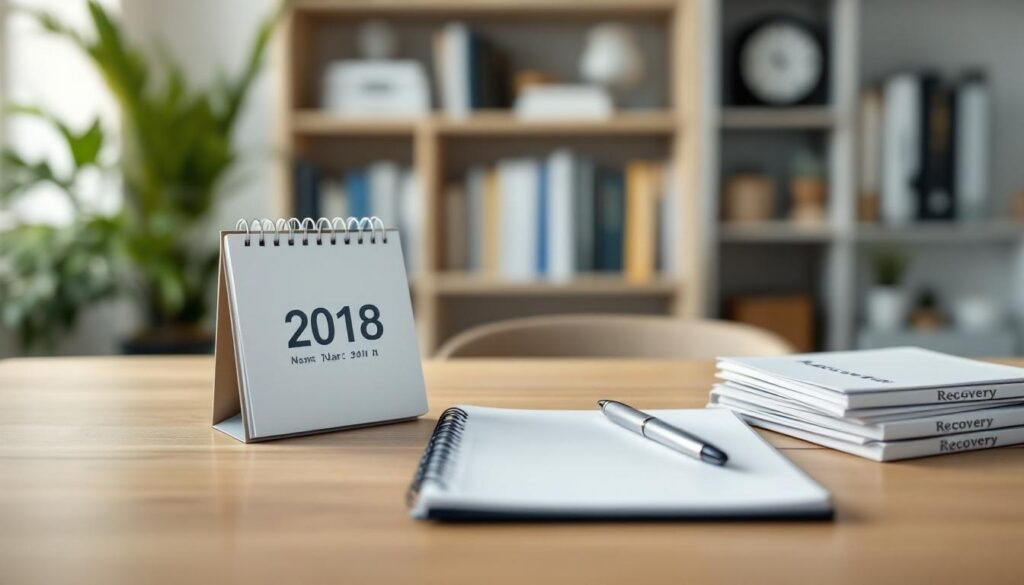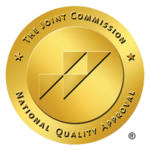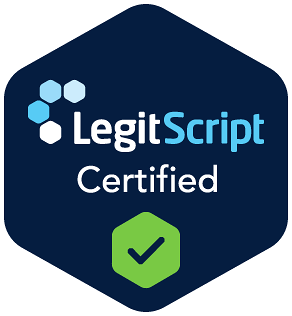Recovery journaling transforms the healing process by providing structure and accountability during challenging times. An addiction recovery journal template serves as your personal roadmap through the ups and downs of sobriety.
We at Amity Palm Beach understand that consistent self-reflection accelerates progress and builds lasting recovery habits. The right template makes journaling accessible, even when motivation feels low.
What Makes a Recovery Journal Actually Work
The Science Behind Effective Recovery Templates
A recovery journal template succeeds when it captures three essential elements that transform abstract healing into measurable progress. Research shows that expressive writing can enhance cognitive processing and improve stress regulation, but only when the structure supports consistent emotional processing.
The Journal of Substance Abuse Treatment found that individuals who track triggers daily identify patterns 40% faster than those who rely on memory alone. This data proves that structured documentation accelerates recovery insights beyond what memory can provide.
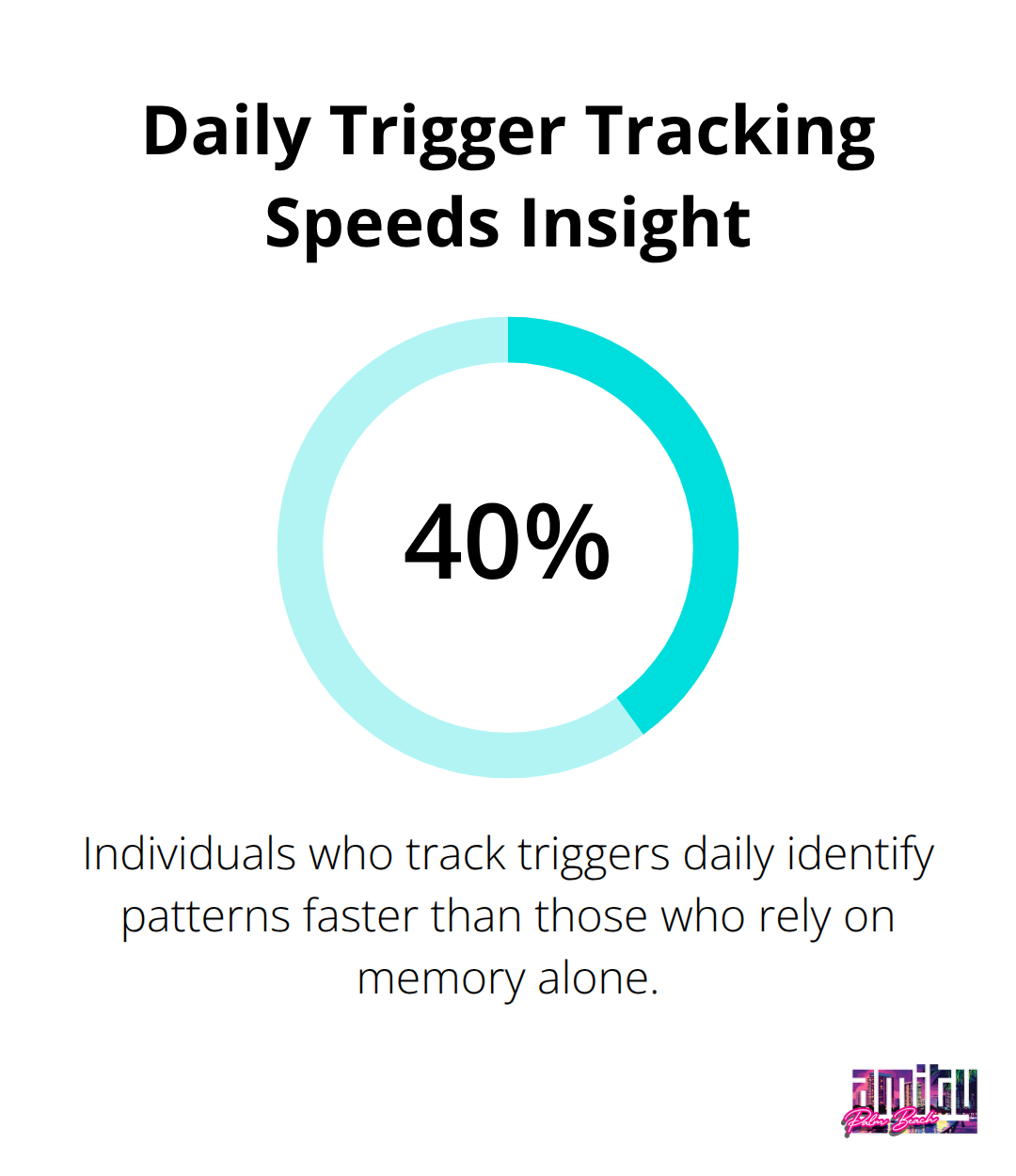
Daily Mood Tracking That Actually Works
The most effective templates include dedicated spaces for daily mood tracking with a simple 1-10 scale. Mood tracking works best with color coding or numerical scales that take less than two minutes to complete. Complex systems fail because they create barriers to daily use.
Your template should make mood documentation effortless. Users who spend more than five minutes on daily entries abandon their journals within three weeks (according to addiction recovery studies). Simple numerical scales with optional color coding maintain consistency without overwhelming users.
Trigger Identification Systems
Your template should include a trigger log with columns for time, location, emotional state, and the coping strategy used. This systematic approach transforms vague awareness into specific, actionable data. Users can spot patterns like “Tuesday afternoons at work” or “social gatherings with certain people” that might otherwise remain invisible.
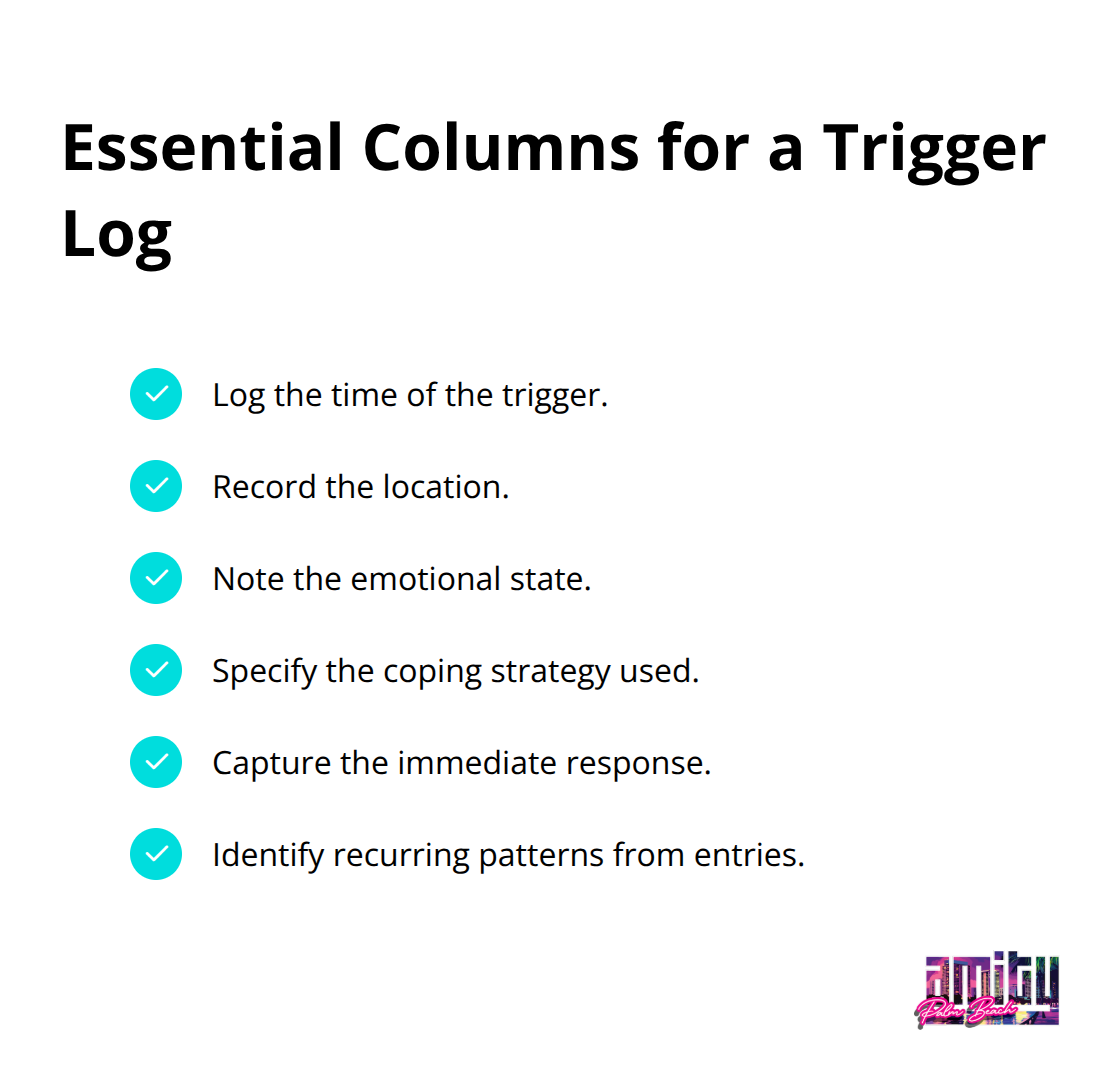
Effective trigger logs capture immediate responses alongside the trigger itself. This dual documentation helps users understand both their vulnerabilities and their existing coping mechanisms.
Gratitude Pages That Go Beyond Generic Thankfulness
Gratitude sections must prompt specific reflections like naming three people who supported your recovery today or identifying one small victory that happened in the past 24 hours. Generic gratitude lists lose their impact after the first week.
These components work together to create accountability without overwhelming users. The combination of mood tracking, trigger identification, and specific gratitude creates a comprehensive system that supports long-term recovery success. Your journal template needs proper structure to maximize these benefits and create sustainable habits.
Setting Up Your Recovery Journal Structure
Weekly Reflection Templates That Track Real Progress
Weekly reflection templates capture recovery milestones and setbacks with measurable detail through specific prompts. The most effective weekly templates include sections for trigger frequency counts, coping strategy effectiveness ratings, and relationship quality assessments. Research shows that weekly structured reflections support mindfulness-based treatment approaches for substance misuse recovery.
Your weekly template should track sleep patterns, exercise frequency, and social connection quality with numerical scales (1-10 ratings work best for consistency). These metrics provide concrete data about your recovery patterns rather than vague impressions.
Monthly Reflection Pages for Pattern Recognition
Monthly reflection pages must go deeper by comparing current emotional stability to previous months and identifying recurring patterns across four-week cycles. Create sections that ask specific questions like “Which coping strategies worked best this month?” and “What triggers appeared most frequently?”
Monthly templates should include space to analyze your weekly data and spot trends that daily entries might miss. This longer-term perspective helps you adjust your recovery approach based on actual results rather than assumptions.
Goal-Setting Pages That Create Accountability
Goal-setting pages work best when they separate short-term objectives from long-term recovery vision. Create dedicated spaces for 30-day, 90-day, and one-year goals with specific metrics and deadlines. Include milestone tracking sections that celebrate small victories like completing seven days sober or attending ten support meetings.
Each goal should have measurable outcomes and specific deadlines. Vague goals like “feel better” fail because they lack accountability markers that show real progress.
Emergency Resources and Crisis Planning
Emergency contact pages should list crisis intervention resources including your therapist, sponsor, crisis hotline, and trusted family members. Add a crisis action plan template with step-by-step instructions for managing intense cravings or emotional emergencies.
Your emergency section needs immediate accessibility during crisis moments. Place these pages at the front of your journal and include backup contact methods for each person listed. This comprehensive structure transforms your journal from a simple diary into a strategic recovery management system that provides both accountability and crisis support.
The effectiveness of your journal structure depends entirely on how consistently you use these templates, which requires specific strategies and daily habits to maintain momentum. For comprehensive support, consider professional addiction treatment options alongside your journaling practice.
Best Practices for Consistent Journal Use
The 15-Minute Morning Rule Changes Everything
Morning journal sessions that last exactly 15 minutes create the highest success rates for sustained recovery documentation. Research shows that morning habits stick better than evening routines because willpower peaks after sleep and before daily stressors accumulate. Set your alarm 15 minutes earlier and write immediately after you wake up, before you check phones or start other activities. This approach prevents excuses and builds automatic responses that survive difficult days when motivation disappears.
Your 15-minute session should follow the same sequence daily: five minutes for mood and trigger assessment, seven minutes for prompted reflection, and three minutes for goal review. This structure eliminates decision fatigue while it maximizes therapeutic benefit. Users who vary their routine abandon journals within six weeks, but those who follow consistent schedules maintain habits for over six months (according to addiction recovery studies).
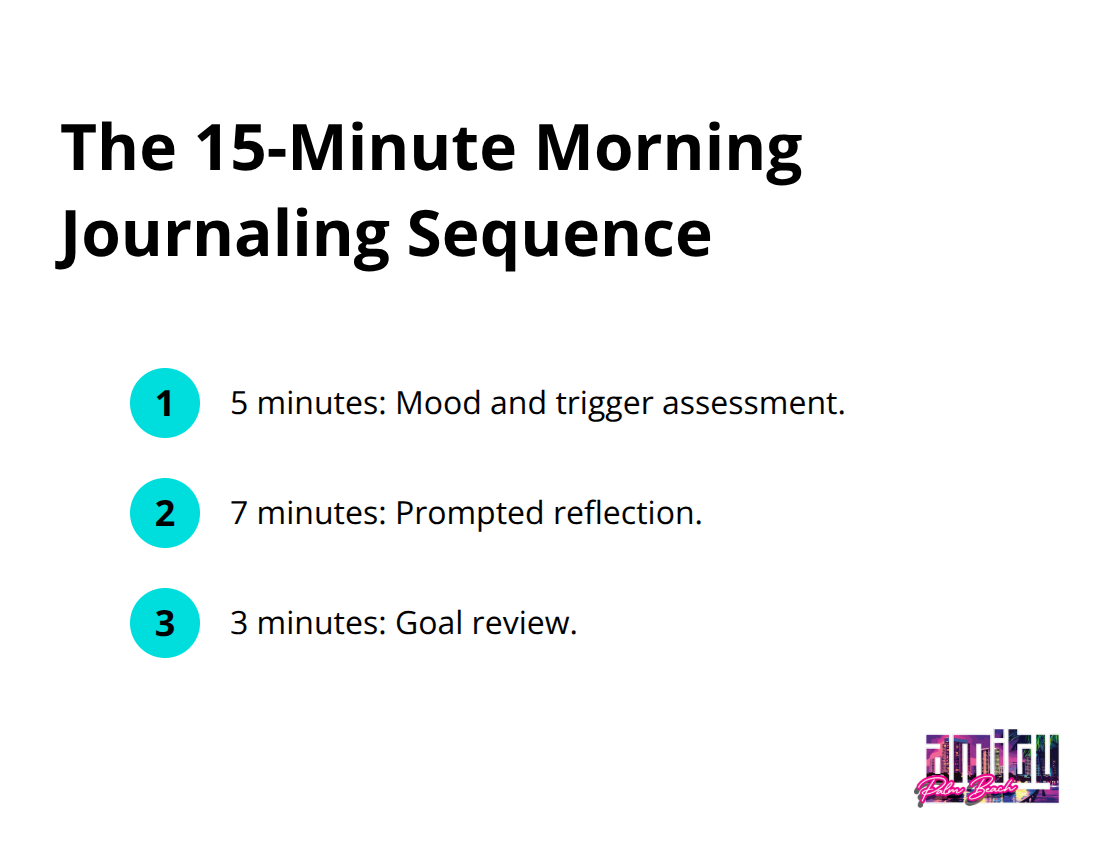
Strategic Prompts Beat Random Writing Every Time
Effective recovery prompts focus on specific behavioral patterns rather than general feelings. Instead of asking “How do you feel today,” successful prompts ask “What triggered your strongest craving yesterday and how did you respond.” This specificity generates actionable insights rather than vague emotional descriptions that provide limited recovery value.
Rotate between three prompt categories weekly: trigger analysis prompts, relationship assessment questions, and future planning exercises. Monday through Wednesday focus on trigger identification with questions like “Which environments felt most challenging this week.” Thursday and Friday examine relationship dynamics with prompts such as “Who supported your recovery goals this week and how.” Weekend prompts concentrate on goal refinement and next-week planning. This rotation prevents prompt fatigue while it maintains therapeutic focus across all recovery dimensions.
Accountability Partners Transform Private Practice into Shared Success
Weekly journal sharing with accountability partners increases completion rates compared to solo journaling according to substance abuse treatment research. Choose accountability partners who understand recovery challenges and commit to weekly 20-minute review sessions. Share three specific entries each week: your highest trigger moment, your most effective coping strategy, and one relationship insight. This selective approach maintains privacy while it creates external motivation that sustains long-term habits.
Digital accountability works through recovery apps that send completion reminders and track streaks, but human accountability partners provide emotional support that technology cannot match. Schedule weekly calls or meetings at consistent times, and treat these sessions as seriously as therapy appointments. Partners should ask direct questions about patterns they notice and celebrate consistency achievements, which creates social reinforcement that makes journal writing feel valuable rather than burdensome. Consider connecting with others through addiction treatment programs that emphasize ongoing support and accountability structures.
Final Thoughts
Your addiction recovery journal template becomes a powerful recovery tool when you commit to consistent daily use. The structured approach we outlined transforms abstract healing into measurable progress through mood tracking, trigger identification, and strategic goal setting. Recovery journaling works because it creates accountability during vulnerable moments and provides concrete evidence of your growth over time.
The 15-minute morning routine, strategic prompts, and accountability partnerships form the foundation for sustained success. Maintaining long-term habits requires you to treat your template as seriously as therapy appointments. Set consistent times, use the same prompts weekly, and share progress with trusted partners who understand your recovery journey (this creates external motivation that sustains your practice).
Your journal template serves as both crisis resource and celebration space. Emergency contact pages provide immediate support during difficult moments, while milestone tracking celebrates every victory along your path to sobriety. Professional addiction treatment amplifies your journaling efforts significantly when combined with evidence-based therapeutic approaches. We at Amity Palm Beach provide personalized care that addresses addiction as a whole-person condition, complementing your self-reflection practice with clinical expertise and ongoing support.


